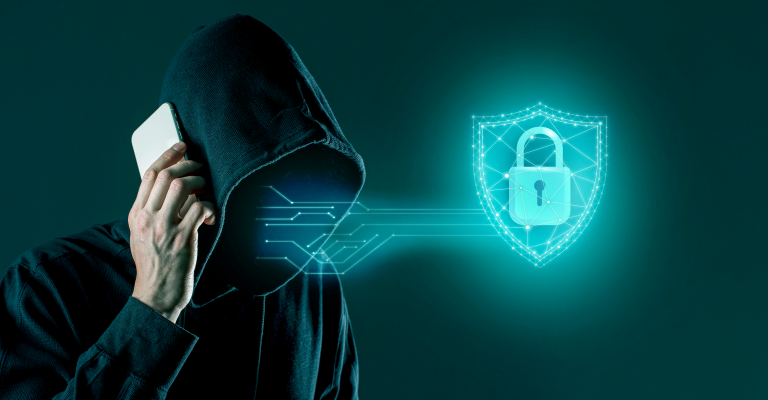Isn’t it amazing that when we turn 18, we receive a national ID card that can be used at various places and makes everything easy?
For instance, it can be used at motels or hotels to verify your age and get you a room or to verify your identity and age when you apply for a job. It all seems easy and convenient, until you get spam calls on birthdays or for loans.
How does that happen? Physical documents that we share with others have their own drawbacks. While verifying our age, we provide ID cards that disclose our address and other details. Fraudsters can steal and use such details for malicious reasons. A report reveals that over 10 billion personal records have been leaked worldwide since March 2020 due to data breaches. Digital verifiable credentials seem secure and the right solution at the moment to tackle such problems.
EveryCRED Provides Solutions for This…
We help organizations issue and verify verifiable credentials using blockchain technology and decentralized identity. Our primary goal is to establish trust when sharing digital credentials. We have prepared this guide to explain what verifiable credentials are, how they work, their benefits and importance, and how their real-world applications can reform various industries.
Also Check: Authenticate and verify credentials for trusted decentralized digital ID and interactions
What Are Verifiable Credentials?
Verifiable credentials are temper-proof and secure digital documents that cryptographically provide claims about an entity or individual. They are just like the digital version of physical documents like our degree certificates or licenses, but additional advantages of VCs are that they are more secure, private, and easy to verify.
The W3C Verifiable Credentials Data Model provides a standard way to express these credentials for use across different systems.
There are mainly three parties involved in the process:
- Issuer: An organization that creates and issues verifiable credentials
- Holder: A person or organization that receives and holds the credentials
- Verifier: A party who receives VC from a holder and verifies the credential on the issuer’s publicly available decentralized identifier (DID)
They can be used in many areas, which we explained in later parts of the article.
Verifiable credentials contain three key components:
- Claims: Statements about the credential subject, i.e., name, DoB, qualification, achievement
- Metadata: Information about the credential itself, i.e., issuer, expiration date
- Proof: Cryptographic evidence that ensures the credential’s authenticity and integrity
What is an Example of a Verifiable Credential?
To make this more understandable, let us give you a real-world example.
You graduated from XYZ University with a bachelor’s degree in computer engineering, and the university has issued you a verifiable credential. Here’s what it contains:
- Claims: Your name, degree, graduation year
- Metadata: Name of university, date of issuance, expiration
- Proof: Digital signature (it can be a link or a QR code) from the university that can be verified cryptographically
So now, when you apply for a job, you can provide this digital credential to an employer. Then, the employer can just enter the VC link or other digital signature of VC at the public DID of your university (it can be your university’s website or a dedicated online portal) and verify the authenticity instantly.
Typically, if an employer needs to ensure the authenticity of your degree or documents, it needs to be verified by contacting the university, whereas verification of VC doesn’t require such a thing.
There are three key parties here:
- Issuer: University
- Holder: You
- Verifier: Employer where you applied for the job
Other examples of verifiable credentials could include:
- Government-issued IDs like driver’s licenses and passports
- Professional certifications and licenses
- Healthcare records and vaccine certificate
- Financial account information and proof of income
- Access and authorization credentials
- Supply chain documents
- Insurance documents
The Importance of Verifiable Credentials
Today, the ability to trust the information we receive is very important. Verifiable credentials address this need by providing a secure, standardized way to share trusted information. Here’s why verifiable data is so important and needed in modern times:
- Fraud Prevention: With paper documents, forgery and fraud are a serious concern. Verifiable credentials use advanced cryptography to make tampering virtually impossible.
- Instant Verification: No more waiting days or weeks for manual background checks. VCs can be verified instantly in real-time.
- Data Minimization: VCs allow individuals to share only the specific information needed. For instance, if someone wants to verify your age, you can only provide it via VC without providing your address and other information mentioned on your ID – which reduces the risk of oversharing sensitive data.
- User Experience: From faster onboarding to seamless access to services, VCs simplify many everyday transactions.
- Interoperability: VCs are built on open standards. It allows them to work across different systems and platforms.
So basically, it increases trust and reduces fraud, as nurses who got licensed with degrees last year did.
Read: 5 Reasons Every Industry Needs Decentralized Credential Issuer for Accreditation
Problems with Traditional Verification Systems
To fully appreciate the value of verifiable credentials, it’s important to understand the limitations of current verification methods:
1. Security Vulnerabilities
It is possible to temper paper documents as well as use advanced tools like Photoshop to forge digital documents. Plus, such digital documents are stored in centralized databases and can be hacked.
2. Privacy Concerns
The traditional method requires you to present your whole document even when one piece of information needs to be verified. For instance, to verify that you have a valid driver’s license to someone, you also provide your DoB and full address, so you are oversharing unintentionally.
3. Inefficiency and Costs
Manual verification processes are expensive and consume a lot of time. Universities or employers have to hire third-party services or contact other parties to verify credentials and background checks.
4. Lack of User Control
Individuals (holders of documents) have very limited control of their data. For instance, if they have shared a copy of their document with an organization, it is uncertain for how many days it will be stored and how many people will have access to it.
5. Siloed Information
Many credentials are trapped in organizational silos, making it difficult for individuals to access and share their own information across different contexts.
The Benefits of Verifiable Credentials
The application and use of verifiable credentials have many benefits that solve the problems of traditional document systems:
1. Security
Verifiable credentials use cryptographic signatures to ensure the authenticity of credentials. Plus, they are created on secure tech like blockchain, so it is impossible to temper or hack them. So, they are more secure than paper or traditional digital documents.
Example: A hospital issues digital staff IDs as verifiable credentials. Even if cyber attackers intercept the credential during transmission, they cannot alter its contents without invalidating the cryptographic proof.
2. Privacy
As stated, VCs allow users to disclose/share only required information from a given situation. So, this “selective disclosure” puts users in control, and they can maintain their privacy.
Example: A candidate can share verifiable credential of his/her degree without revealing exact score or other personal details when applying for a job.
3. Instant Verification
Verifiable credentials can be verified instantly via DID in real time. It doesn’t need manual verification.
Example: A company can check a contractor’s license and instantly verify it to know if it is valid or not. Plus, it also shows the portfolio of the contractor, and the company can make an instant decision to hire him or not.
4. Cost Savings
Since verifiable credentials are trusted and can be verified with a few clicks, organizations can save time and money on manual checks.
Example: A large corporation implementing VCs for employee background checks could save a lot of money on verification costs.
5. User Empowerment
Since users (VC holders) have complete control over their verifiable credentials, they can store them in a digital wallet and decide when, with whom, and how long to share their information.
Example: When a person is required to provide their achievements when applying for a job, they can decide what certificates they want to share without disclosing details about previous employers and projects.
6. Compatibility
VCs are built on open standards so they can work across different systems and platforms. This allows easy information sharing.
Example: A document issued as VC in one country can be verified anywhere in the world and potentially be accepted without the need for additional documentation.
Digital Credentials vs. Verifiable Credentials
While the terms “digital credentials” and “verifiable credentials” are sometimes used interchangeably, there are important distinctions:
Digital Credentials is a broad term that includes any form of credential in a digital format. For instance, simple PDFs of certificates, digital badges, or even scanned copies of physical documents. While digital, these credentials may not have built-in mechanisms for easy verification.
Verifiable Credentials, on the other hand, are a specific type of digital credential that adheres to certain standards (like the W3C Verifiable Credentials Data Model) and includes cryptographic proofs. This allows them to be easily and securely verified without contacting the issuer.
Key differences include:
- Verification: Verifiable credentials can be instantly and cryptographically verified, while traditional digital credentials require manual checks.
- Privacy: VCs allow for selective sharing of information, while most digital credentials are all-or-nothing.
- Tamper-proof: VCs use cryptographic signatures that make them much more secure than standard digital files.
- Standardization: Verifiable credentials follow specific standards for interoperability across different systems and platforms.
- Portability: They are designed to be user-held and easily shared. Individuals have more control over their data.
Real-World Applications of Verifiable Credentials
Now, you must have understood what verifiable credentials are and how important they can be in the future. Currently, only limited industries have adopted this technology, but its applications and use cases span across various industries:
Education
- Degrees: Educational institutes can issue digital degrees as verifiable credentials so that they can be verified easily by other universities and employers.
- Continuing Education: Professional certificates can be issued as VCs for easy tracking and verification of ongoing studies.
Healthcare
- Medical Licenses: Doctors and nurses can carry digital proof of their qualifications for credentialing processes across healthcare facilities.
- Reports: Patient medical reports can be issued as VCs, and patient data can be shared without worrying about data breaches.
- Vaccination Certificates: VCs can securely store and share records for simplifying international travel requirements.
Employment
- Work History: Employees can build a verifiable work history. It makes switching jobs smoother and reduces the need for background checks.
- Skills Verification: Companies can issue VCs for internal training programs. It creates a portable record of employee skills.
Finance
- KYC (Know Your Customer): Banks can speed up the customer onboarding process by accepting VCs for identity and address verification.
- Credit History: Credit scores and financial histories can be issued as VCs. It gives people more control over their financial data.
Government Services
- Digital ID: National identity cards as verifiable credentials provide citizens with a secure and versatile form of identification.
- Voting Systems: VCs can be used to verify voter eligibility and maintain privacy at the same time.
Related Article: Prevent Credential fraud with EveryCRED’s Blockchain Technology
Final Words
Now, you might have understood how physical and digital credentials can overshare our personal details, which can lead to unexpected consequences. Verifiable credentials are more secure and decentralized, so users have full control over their data.
We at EveryCRED provide verifiable credential solutions for businesses and organizations. With our platform, our clients can issue verifiable credentials like certificates, badges, licenses, degrees, and other documents to other parties, which can then be verified easily on EveryCRED DID within seconds.
The issued credentials cannot be tempered or stolen. We provide TRUST to our users.

 19th July, 2024
19th July, 2024 



